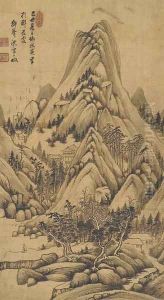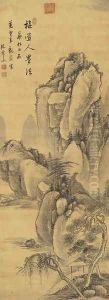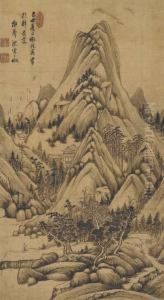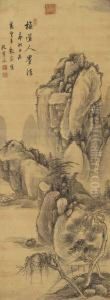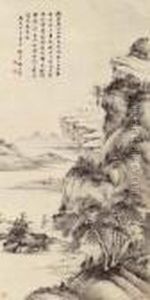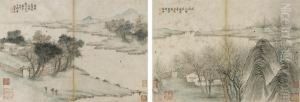Shen Zongjing Paintings
Shen Zongjing was a Chinese painter during the late Ming and early Qing dynasties. Born in 1619 in the Zhejiang province, Shen's works were predominantly influenced by the tumultuous period of transition from the Ming to the Qing dynasty, which is often reflected in the serene and introspective nature of his paintings. He is particularly known for his landscape paintings, which are characterized by a refined use of brushwork and a masterful incorporation of blank space, or 'liubai', to convey depth and atmosphere. Shen Zongjing was also a poet and calligrapher, skills that were highly regarded in the literati tradition of Chinese art. His paintings often integrated poetry and calligraphy, which was a common practice among the literati, who believed in the unity of the three perfections: painting, poetry, and calligraphy. Shen Zongjing's works are considered a bridge between the styles of the Ming and early Qing periods. His legacy is that of a scholar-artist who maintained a strong allegiance to the cultural traditions of the Ming dynasty while adapting to the new realities of the Qing era. He lived during an era when many literati struggled with the loss of the Ming dynasty and the establishment of the foreign Qing rule, which led to a retreat into the arts as a form of personal expression and cultural preservation. Shen Zongjing's contribution to Chinese art is marked by his adherence to the ideals of literati painting, emphasizing personal expression and the pursuit of harmony with nature. His works are held in various collections and continue to be appreciated for their quiet beauty and historical significance.


